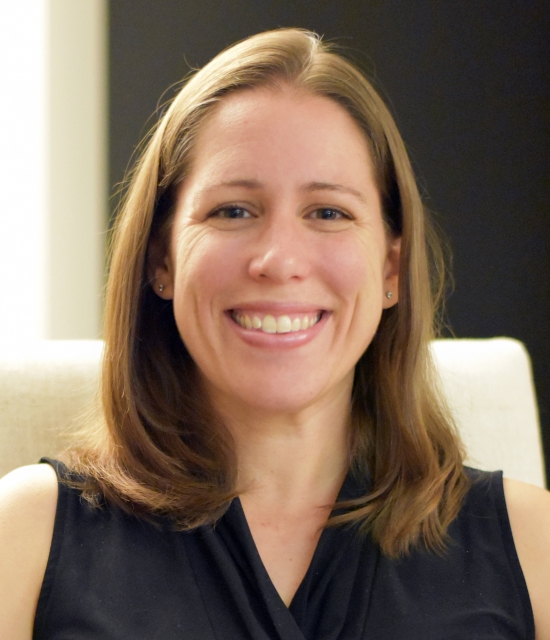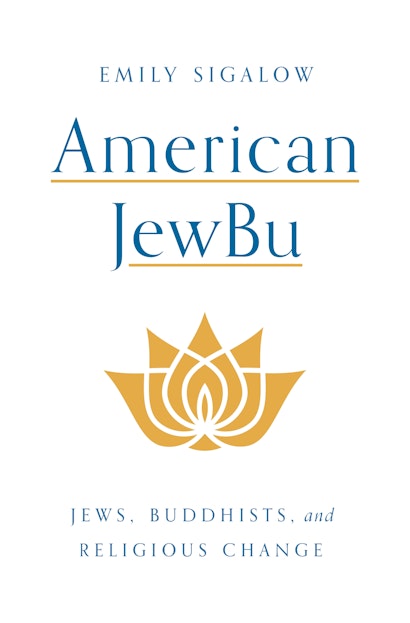May is Jewish American Heritage month, and it is worth noting that today, many Jewish Americans are embracing a dual religious identity, for instance, practicing Buddhism while also staying connected to their Jewish roots. American JewBu tells the story of Judaism’s encounter with Buddhism in the United States, showing how it has given rise to new contemplative forms within American Judaism—and shaped the way Americans understand and practice Buddhism.
What exactly is a JewBu? Is that a word of your creation?
ES: JewBu is actually a portmanteau of JEWish and BUddhist colloquially used to describe practitioners of Buddhism or Buddhist meditation who are of Jewish background. While conducting research for this book, I heard respondents identify themselves as JewBus, BuJews, and even BuddJews. In his popular 1994 book The Jew in the Lotus, Rodger Kamenetz spelled it JUBU, in all capital letters.
In this book, I opted to use the spelling JewBu for two reasons. First, my hope is that the title American JewBu would make it clear to the casual book browser and those unfamiliar with the Jewish Buddhist phenomenon that this book is actually about Jews.
Second, my research reveals that Jewish Buddhists from the millennial age group, particularly those under the age of thirty, identify as Jew- Bus. Unlike many American Jews of the baby boom generation who began practicing Buddhism in the 1960s and 1970s—who dislike the label, and view it as a form of disparagement or condescension—millennials embrace this blended identity.
There is a widespread perception that American Jews have a particular affection for Buddhism. Dozens of celebrities, including Goldie Hawn, Leonard Cohen, Steven Seagal, and Mandy Patinkin, have publicly extolled their Jewish Buddhist identities in print and on television. Do you think there is an intrinsic affinity between Judaism and Buddhism? What explains this affection?
ES: I do not think there is an intrinsic affinity between these two religious traditions. Rather, to understand the particular relationship between Judaism and Buddhism, I argue that we need to understand the historical and social webs that connect them. The central argument in this book is that the distinctive social position of American Jews, or what I call the “Jewish social location,” led American Jews to Buddhism and shaped the encounter between the two traditions.
The Jewish social location is the set of orientations produced by the position of Jewish Americans as a distinctively liberal, urban, and upper-middle- class religious minority in the United States. More than any other religious or ethnic group in the United States, Jews live in and near the largest American cities, exceed all other groups in socioeconomic status, and surpass all other groups in educational attainment. In addition, Jews consistently fall at the bottom of measures of traditional religious beliefs and relate deeply to the experience of being a religious minority in the U.S.
This distinctive social position predisposed Jews to encountering Buddhism and shaped the historical mark they left on it. It also structured how Jews interpreted it, defining which aspects of Buddhism they adopted and which they discarded.
People generally assume that the encounter between Judaism and Buddhism emerged from the countercultural ethos of the 1960s. Is that right?
ES: Actually, the encounter between Judaism and Buddhism took root much earlier than most people recognize. Beginning in the late 19th century, Buddhism captured the interest of many Jews, just as it had of many Americans more generally. At the World’s Parliament of Religions in Chicago in 1893, Charles T. Strauss—a wealthy haberdasher of Jewish descent—became the first person to convert to Buddhism on US soil. Strauss’s turn to Buddhism marked the first time in history when converting to Buddhism became a serious religious possibility for Jews in the United States. His conversion to Buddhism was the nineteenth century’s most noted example of Jewish involvement in Buddhism, yet it was also indicative of a wider turn in that era toward Jewish interest in the tradition.
A second early period of Jewish-Buddhist involvement in the United States began in the 1920s. This period witnessed a growing appearance of solo American Jews—largely from wealthy and prominent families—who received training by Asian teachers and pursued Buddhist practices in Asian-founded Buddhist groups. In the book, I illustrate these developments through the stories of three prominent Jewish Buddhist modernizers: Julius Goldwater, Samuel Lewis, and William Segal.
You describe the blending of Judaism and Buddhism as a form of contemporary syncretism. Why did you choose to use this concept to describe the mixing of Judaism and Buddhism?
ES: I specifically embrace the framework of syncretism to analyze the meeting and mixing of Judaism and Buddhism in the United States. Syncretism remains the concept central to the interdisciplinary study of religious mixing, and it raises broader questions about issues of boundaries and power, befitting an examination of the transformative encounter between these traditions. I broadly define syncretism as the mixing of various elements (including practices, beliefs, identities, communities, etc.) associated with different religious traditions.
The use of syncretism as an analytic framework helps to move sociologists of religion beyond the various metaphors—salad bar religion, religion à la carte, or bricolage—often used to explain religious mixing in the United States. These metaphors connote the idea that individuals pick and choose among religious options in highly individualistic and idiosyncratic ways, and that the processes of religious mixing are steeped in arbitrary choice and random ordering. This has led scholars to dismiss religious mixing as trifling and/or ephemeral, even as recent survey data have demonstrated the prevalence of religious mixing in the United States. The framework of syncretism, as currently used in the literature, invites an analysis of the cultural and structural processes that shape religious mixing.
My aim was to investigate the historical forces that produced Jewish-Buddhist syncretism in the U.S. and how individuals experience this religious blending in their daily lives. I was specifically interested in the syncretism of religious practices, spiritual discourses, and identities produced by the meeting and mixing of Judaism and Buddhism in the U.S.
Emily Sigalow is a sociologist of contemporary Jewish life and Executive Director of the Impact and Performance Assessment Department at the UJA-Federation of New York, a leading Jewish philanthropic organization. emilysigalow.com

